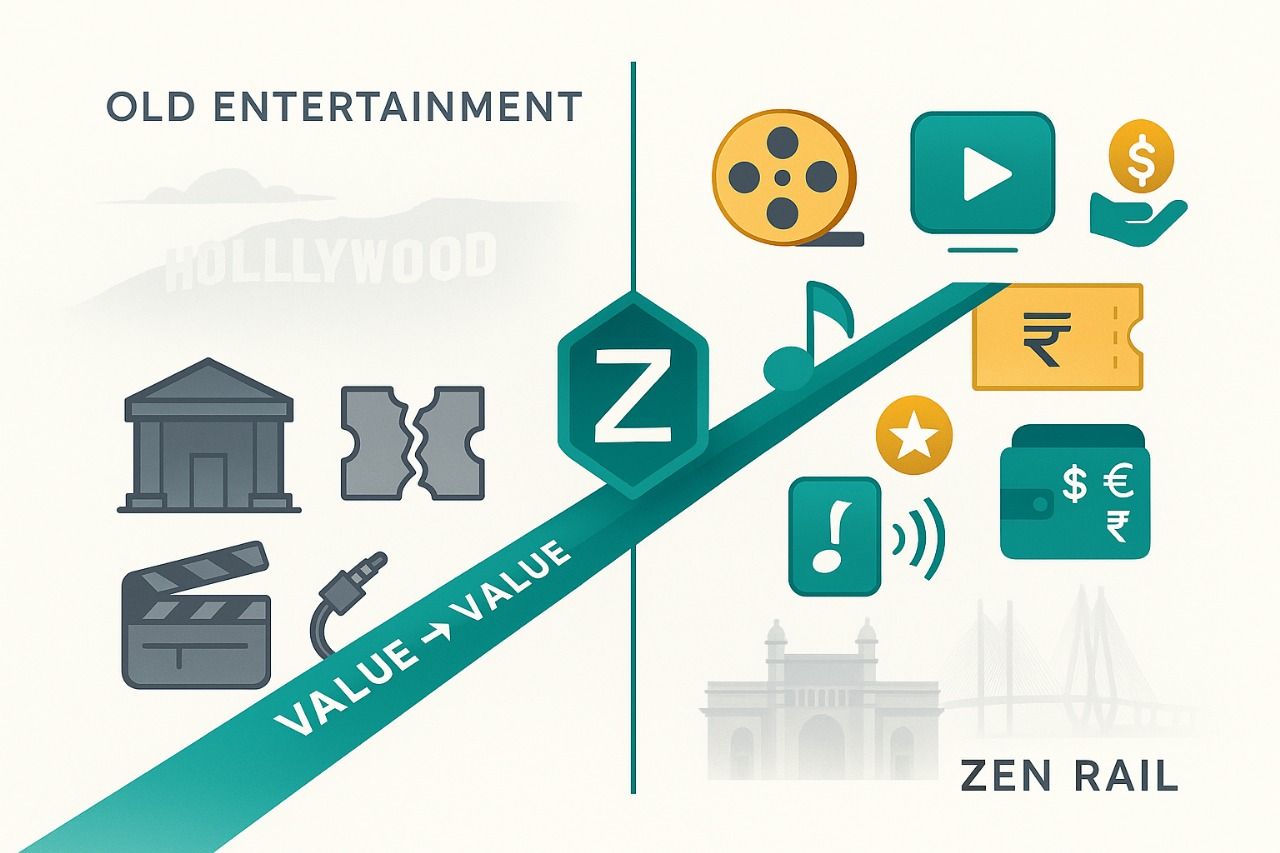
People say “Bitcoin is backed by nothing.” What they mean is: there’s no government decree, no central bank balance sheet, no corporate guarantee. Correct. That’s the point. Bitcoin replaces trust in authority with trust in code, incentives, and an open network secured by real-world energy. It’s not faith-based; it’s rule-based. And those rules: fixed supply, permissionless access, transparent accounting, and costly security, are exactly what make it valuable.
Below is the straight, rational case; use-cases, data, and a deeper philosophical argument for why Bitcoin matters to productive people and free societies.
1) What “backing” really means
In fiat money, “backing” is ultimately political: legal tender laws, tax obligations, lender-of-last-resort powers, and the credibility of officials. In 1971, the U.S. ended convertibility of dollars to gold, dissolving the last hard constraint on issuance; since then the dollar’s “backing” has been policy and power, not metal.
Bitcoin flips the concept. Its “backing” is:
- Mathematical scarcity: a hard cap that asymptotically approaches 21 million coins and halves new issuance roughly every four years.
- Costly security: miners spend real energy to add blocks, making attacks economically prohibitive; the network’s hashrate has recently surpassed the zettahash era: an all-time record signal of security.
- Open verification: anyone can run a node and verify the entire history. Tens of thousands of reachable nodes enforce the rules daily.
That’s not “nothing.” That’s verifiable scarcity, costly security, and global consensus you can audit yourself.
2) Use cases that exist today
A. Censorship-resistant donations and speech finance
When platforms and banks block transactions for political reasons, Bitcoin routes around it. After Canada used emergency powers in 2022 to freeze accounts tied to the trucker protests, donors turned to Bitcoin precisely because censorship is harder at the protocol level. Official reports later documented millions in frozen accounts.
Go back further: when WikiLeaks faced a payment blockade from Visa, MasterCard, PayPal and others (2010–2011), it survived by accepting Bitcoin, an early and famous proof of use.
In Nigeria’s 2020 #EndSARS movement, organizers adopted Bitcoin after banking channels were shut. Bitcoin kept civil society funded.
B. Lower-friction global transfers
Global remittances remain stubbornly expensive; in recent reports, average fees hovered around 6–7% and often higher through banks. Bitcoin and Lightning alternatives can compress costs and settle faster, especially where the fiat rails are weak or politicized.
C. Portfolio hedge and institutional access
Whether you like it or not, Bitcoin is now a macro asset with deep and growing access points. U.S. spot ETFs have brought billions in flows and BlackRock’s iShares Bitcoin Trust (IBIT) now ranks among the top ETFs by assets: tangible evidence of institutional demand.
D. Transparent, auditable money
On-chain data is public. Unlike closed ledgers, anyone can analyze issuance, flows, and settlement patterns. Research houses like Coin Metrics publish regular analytics precisely because the ledger is open by design.
3) The “energy” question, reframed
Saying “Bitcoin is backed by energy” is shorthand. More rigorously: energy is the cost that enforces honesty. Proof-of-Work ties the security of the ledger to the expense of computation. Attackers must spend more energy than the rest of the honest network to rewrite history; and at today’s hashrate, that’s astronomically costly. Recent estimates show network power draw is meaningful (a policy topic worth debating), but that consumption is what anchors Bitcoin’s neutrality and finality.
If you demand credibly neutral, seizure-resistant settlement without permission from a central party, you must anchor it to something expensive to counterfeit. For Bitcoin, that anchor is electricity and hardware pointed at an open protocol. That is security, not waste.
4) Scarcity: not a promise, a property
Fiat scarcity is a policy goal; Bitcoin scarcity is a protocol fact. The schedule - halvings every ~210,000 blocks - has run like clockwork for 15 years. Roughly 19–20 million coins are already mined; a non-trivial fraction may be lost forever, lowering effective float. Scarcity here isn’t a pledge; it’s code enforced by thousands of independent validators.
This matters for rational allocators. Scarcity that doesn’t depend on committee votes or press conferences is predictable. Predictability is the precondition of long-range planning, the lifeblood of productive enterprise.
A brief on Bitcoin halving:
Bitcoin releases new coins as a reward to the computers (“miners”) that secure the network. About every 4 years, that new-coin reward is cut in half. This event is called the halving.
Why does it happen?
It’s built into Bitcoin’s rules to keep the supply limited and predictable; no one can print/mint/mine more at will. Halvings slowly reduce how many new bitcoins enter the world until the total tops out at 21 million (around the year 2140).
What changes on halving day?
Only one thing: the new coins per block get cut in half. Nothing else about how Bitcoin works changes.
Quick timeline (block reward → new BTC per block):
2009: 50
2012: 25
2016: 12.5
2020: 6.25
2024: 3.125 (most recent halving)
~2028: 1.5625 (next expected)
Why people care:
Scarcity: Fewer new coins being created = slower inflation of supply.
Market attention: Historically, halvings have drawn interest because supply growth falls while demand may stay the same or rise. (Prices still move up or down; nothing is guaranteed.)
Miner economics: Miners earn fewer new coins, so they rely more on transaction fees and efficient operations.
Simple analogy:
Imagine a gold mine that halves the amount of gold you can dig up each day, like clockwork. Gold becomes harder to get, making each ounce more precious. Bitcoin does this on purpose, by code.
Common questions:
Does halving make my bitcoins split in two? No. Your coins don’t change. Only the new coins awarded to miners change.
Is it a one-time thing? No. It repeats roughly every 210,000 blocks (~4 years) until issuance reaches zero.
Does price always go up? There’s no guarantee. Halving affects supply; price also depends on demand.
That’s it: the halving is Bitcoin’s built-in way to stay scarce, predictable, and independent of central control.
5) Evidence of network strength
- Hashrate: sustained near or above one zettahash per second on 7-day averages; a level unthinkable a few years ago. More hashrate, more security, higher attack costs.
- Nodes: ~24k+ reachable full nodes today, across ~150+ countries, constantly verifying and enforcing consensus rules. Decentralization isn’t a slogan; it’s running software.
- Market infrastructure: ETFs, public mining firms, custody standards, and a maturing analytics ecosystem: evidence of monetization, not of mania.
6) Concrete stories: when Bitcoin’s properties mattered
- Canada, 2022: Bank accounts were frozen under emergency powers; within days, Bitcoin became a primary path for donations. Whatever your politics, the episode showcased the difference between permissioned finance and neutral rails.
- Nigeria, 2020: When the central bank throttled funding of protest organizers, they shifted to Bitcoin to keep delivering food, legal aid, and supplies.
- Ukraine, 2022: Over $200M in crypto donations flowed to pro-Ukraine causes and government addresses; fast, borderless, and transparent in a crisis.
These are not hypotheticals. They are field tests of censorship resistance and global transferability.
7) Objections worth answering (briefly)
“It’s too volatile to be money.”
It IS volatile - early monetization curves are. But volatility is a symptom of discovery in a free market where no authority pegs the price. As market depth, derivatives, and institutional access expand (e.g., ETFs), volatility tends to compress over longer windows.
“It wastes energy.”
Bitcoin consumes energy to provide a unique property: neutral, permissionless settlement that any minority can use against the will of a majority. That property is costly by design; like locks, firewalls, or armored vaults. Whether society values this enough to “pay” for it is a political choice; the technology makes the trade-off explicit with data, not dogma.
“Governments will ban it.”
Some try. But Bitcoin is software plus a global, permissionless network of nodes and miners across many jurisdictions. History shows bans tend to redirect rather than erase adoption, while regulated on-ramps (custody, ETFs) grow.
8) Why this matters philosophically (an Objectivist lens)
Money is a tool. In Objectivist terms, money is the instrument of voluntary exchange among producers. The moral defense of money is the defense of trade by consent. For money to function as a rational tool, it must embody three traits:
- Predictability – so you can plan;
- Integrity – so the rules don’t shift under political pressure;
- Agency – so access isn’t at the mercy of gatekeepers.
Bitcoin advances all three. The issuance schedule is knowable decades forward, enforced by a global chorus of independent validators, not by fiat. The rules are hard to corrupt because changes require broad, voluntary adoption. And agency is maximized: a person can custody value with a brain-held seed phrase, route payments without permission, and verify the ledger without appealing to authorities.
This is monetary integrity as a public good, paid for privately via mining, yet available to anyone who chooses to opt in. In ethical terms, Bitcoin aligns with rational self-interest: it rewards the virtues of independence (run your own node), productivity (earn and hold a scarce asset), and responsibility (self-custody). It punishes vice (inflationary expropriation) by making it technically impractical within the system’s rules.
Critically, Bitcoin separates money from politics without pretending humans can live outside society. It doesn’t abolish law; it reduces the surface area for capricious power over peaceful exchange. That is a civilizational upgrade: fewer arbitrary levers, more objective rules.
9) Economics of trust: from decree to verification
In fiat systems, every transfer is permissioned: banks and processors can freeze or reverse, subject to policy or “risk.” Sometimes that’s useful (fraud refunds). But we also pay hidden taxes: delays, fees, and the ever-present political veto. Remittance data illustrates this: global average fees near 6–7% are not a law of nature; they’re artifacts of intermediaries and compliance overhead. Bitcoin offers an option; not a mandate, to escape that tax when needed.
On Bitcoin, settlement is final within minutes; reversals don’t exist at L1, so fraud prevention happens before the transaction, not after. You trade chargeback risk for settlement certainty. That’s not “better for everything,” but it’s objectively better for specific uses: treasury movements, high-value settlement, cross-border payments, and funds in adversarial contexts.
10) The network today: scale, security, and adoption
- Price and market cap: Bitcoin trades around six figures with a market cap in the trillions; exact figures fluctuate intraday, but the asset sits among the world’s largest by capitalization.
- Security trend: Difficulty and hashrate reached record highs in 2025 (≈1 zettahash on a 7-day average), raising the cost of attacks.
- Decentralization: ~24k reachable nodes, thousands more unadvertised, spanning over 150 countries. This distribution is the heartbeat of censorship resistance.
- Institutional rails: Spot ETFs, public miners, and an analytics/assurance stack around the asset class (audits, forensic firms, custody standards) continue to mature.
11) What about crime?
Yes, criminals use Bitcoin; like they use roads and email. But two facts matter: (1) on-chain transparency has made many kinds of crime harder, enabling law enforcement to trace funds; (2) reputable studies show illicit volumes are a small share of total activity and trend down as tools improve. The right response is better policing and market hygiene—not strangling neutral infrastructure.
12) The moral: sovereignty with responsibility
Bitcoin does not promise utopia. It demands competence: managing keys, understanding finality, accepting price risk. But it gives something exquisite in return: monetary self-determination. You can hold value without permission, move it across borders at the speed of the network, and verify your own receipts. That is not a speculative thrill; it is a human right expressed in code.
When people claim “it’s backed by nothing,” they confess a category error. Bitcoin is not backed by rulers. It is backed by rules and by a worldwide community who pay real costs to enforce them because the benefit (credible neutrality) is worth more than the cost. In a world where governments broke the gold limit and now ask you to trust them again, Bitcoin says: don’t trust, verify.
13) A brief closing
Progress demands money aligned with reason: predictable, incorruptible, and usable without begging. Bitcoin’s value is not mystical; it arises from objective features that reward the virtues of production, independence, and trade. It shifts the monetary foundation from “men with pens” to men with principles, from promises to math.
That’s why millions choose it. Not out of rebellion for rebellion’s sake, but from a rational desire to live by voluntary exchange under knowable rules. If you believe in building, owning, and trading value by right, Bitcoin is not “backed by nothing.” It is backed by everything that made civilization possible: energy harnessed by ingenuity, rules enforced by reason, and the moral choice to deal with one another as free, responsible adults.
Nothing here is financial advice; it’s a rational framework for understanding why Bitcoin’s value is real.




